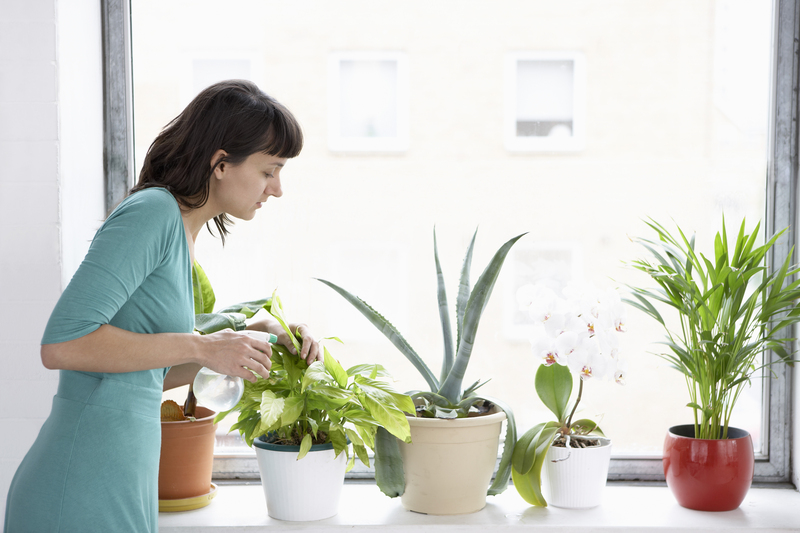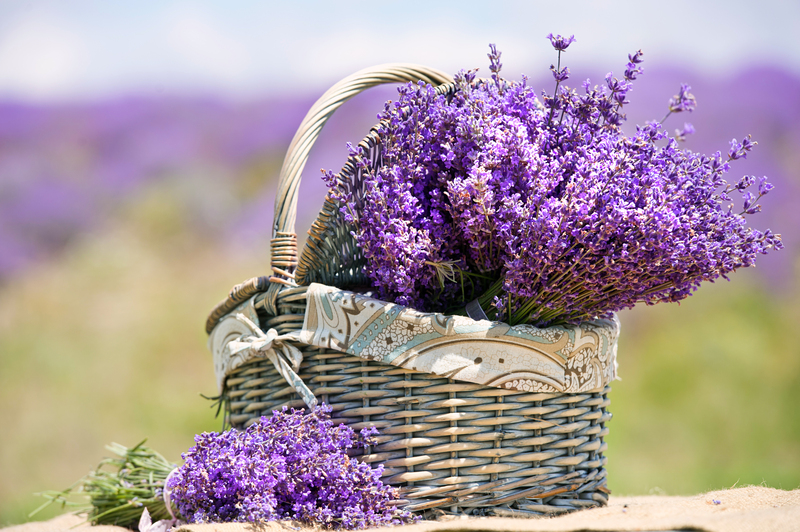Building a Thriving Garden for Kids' Play and Learn
Posted on 19/06/2025
Building a Thriving Garden for Kids' Play and Learn
Transform your backyard into an oasis for your children--a space where play, discovery, and learning flourish hand-in-hand. Building a thriving garden designed for kids to play and learn is not only enriching but also fosters lifelong appreciation for nature, responsibility, and creativity. Whether you dream of butterfly havens, veggie patches, or whimsical fairy nooks, this comprehensive guide will help you turn your vision into reality.
Why Create a Children's Play and Learning Garden?
Combining gardening with play offers unique benefits. Kids naturally love to explore; nurturing a child-friendly garden invites them to touch, smell, dig, and discover. More than just a pretty outdoor space, a thriving kids' garden:
- Encourages curiosity about plants, insects, and the natural world
- Promotes responsibility through care and observation
- Enhances sensory and motor skills via hands-on activities
- Supports emotional well-being through time outdoors
- Provides opportunities for STEM learning in fun, memorable ways
- Strengthens family bonds through shared experiences

Planning Your Child-Friendly Garden Oasis
Designing a thriving garden for children's play and learning starts with solid planning. Here are the most important steps to consider:
Assess Your Space and Sunlight
Evaluate your available space. Do you have a large backyard, a side yard, a patio, or just a small spot on a balcony? Observe where the sunlight falls--most edible plants and flowers need at least 6 hours of sunlight daily. Note shaded areas for shade-loving varieties and cool play spots in hot weather.
Consider Kids' Ages and Safety
Ensure your play-and-learn garden is age-appropriate. For toddlers and preschoolers, focus on easy-access raised beds, soft mulched areas, and gentle slopes. For older children, introduce more challenging projects like trellises, climbing plants, or wildlife habitats. Always exclude toxic plants, use non-slip surfaces, and ensure no tripping hazards or sharp tools are accessible.
Get Children Involved in the Design
*The key to a flourishing children's garden is ownership!* Let kids help decide what to grow, where to set up play areas, and how to decorate. Involving them from the beginning boosts motivation and encourages them to spend more time outdoors.
Essential Elements of a Kids' Garden for Play and Learn
For a truly engaging play and learn garden, combine activity-focused features with opportunities for wonder and experimentation. Consider including:
- Raised beds or container gardens (easy access, kid-friendly scale)
- Pathways and stepping stones (exploring, gross motor development)
- Edible plantings (snacks and lessons about food origins)
- Sensory plants (touchable, fragrant, visually striking)
- Wildlife habitats (butterfly gardens, bee hotels, bird feeders)
- Play equipment (mud kitchens, sand pits, climbing logs, teepees)
- Secret hideaways (living willow tunnels, sunflower forts, den areas)
- Creative corners (outdoor art station, story post, music wall)
Plant Choices for a Thriving Play and Learn Garden
Picking plants that thrive in your region while providing hands-on learning and sensory delight is crucial. Here are suggested plant options:
Edible Plants Kids Love
- Cherry tomatoes: Fast-growing, sweet, and bite-sized
- Strawberries: Attractive, easy to harvest, perennial
- Snap peas & sugar snap peas: Climbing, delicious raw off the vine
- Carrots & radishes: Quick maturity, fun to pull up
- Pumpkins & sunflowers: Great for competitions; impressive growth
- Herb patch: Basil, mint, chives--fragrant, use in snacks and crafts
Sensory Plants (Touch, Smell, Sound)
- Lamb's ear (Stachys byzantina): Silky, soft leaves beg to be touched
- Lavender: Calming fragrance, attracts pollinators
- Nasturtium: Peppery edible flowers, bright and colorful
- Fountain grass: Rustling stalks create soothing soundscapes
- Snapdragons: "Dragon mouth" flowers to squeeze open
- Alyssum: Sweet scent, great for borders
Wildlife-Friendly Varieties
- Milkweed: Essential for monarch butterflies
- Bee balm, borage, zinnia: Pollinator magnets
- Sunflowers: Seeds attract birds and squirrels
- Native grasses and wildflowers: Boost biodiversity and resilience
Creating Zones for Play and Learning
Dividing your kids' garden into zones supports a broader range of activities and maximizes learning opportunities.
Hands-On Gardening Zone
This is where kids can dig, weed, plant, water, and harvest their crops. Use low, wide raised beds or containers for accessibility and safety. Provide child-sized tools, watering cans, and gloves.
Sensory & Exploration Zone
Design a sensory pathway using stepping stones, logs, or mulch leading through aromatic, textured, and colorful plants. Install wind chimes, water features, or musical instruments for auditory exploration.
Nature Play Zone
Leave a wild corner or create a 'bug hotel' from logs and stones to invite beetles, ladybugs, and other beneficial insects. Build a simple pond or dish for observing aquatic life. Add climbing structures, sand or mud pits, or a fairy garden for imaginative play.
Relaxation & Reading Nook
Dedicate a shady spot for a bench, hammock, or picnic blanket. Decorate with bunting or garden art. Provide a waterproof box of nature-themed books, coloring supplies, or journals for quiet downtime and reflection.
Encouraging Learning in the Garden
The best thriving kid-centric gardens are those that seamlessly blend fun with knowledge. Here's how to foster playful learning every season:
- Label plants & beds: Use weatherproof signs and encourage kids to create their own labels and garden maps.
- Start a garden journal: Track planting dates, weather, pest sightings, and favorite discoveries.
- Experiment together: Compare how plants grow in sun and shade, try growing crystals with sugar water, or build a compost bin.
- Plan theme weeks: "Butterfly Safari," "Pizza Garden," "Color Hunt," or "Bug Detective."
- Integrate math & science: Measure plant heights, count petals, estimate harvests, and observe what attracts bees and birds.
- Host mini-harvest festivals: Celebrate with outdoor picnics, taste tests, or homemade crafts from natural materials.
Garden Games and Activities
- Scavenger hunts: "Find something fuzzy, something red, something buzzing!"
- Plant races: See whose sunflower grows tallest
- Garden crafts: Pressed flower art, painted rocks, DIY wind chimes
- Story time or puppet shows: Enact tales of insects and woodland creatures
- Seed swaps: Exchange seeds with friends or neighbors
Maintaining a Lush Kids' Garden
A flourishing garden for play and learn evolves throughout the year. Maintain success with these tips:
- Choose low-maintenance, hardy plants to minimize disappointment from pest, weather, or watering issues
- Encourage regular, short garden sessions rather than long, overwhelming chores
- Keep everything accessible: Child-height shelves, tools, and water sources
- Involve kids in daily checks: Look for new buds, weeds, insects, or weather changes
- Rotate crops and renew play features each season to keep interest fresh
- Support garden wildlife: Maintain pollinator plants, birdbaths, and compost piles
Adapting for Various Spaces
Not everyone has a large backyard, but you can still create engaging kids' gardening and play opportunities on balconies, patios, or community plots:
- Use vertical planters for beans, strawberries, and flowers
- Window boxes and pots make great herb gardens
- Small sand or water trays support sensory play on tiny patios
- Indoor grow kits & fairy gardens bring the outdoors inside during bad weather
- Join local community gardens to access larger plots and meet other families
Eco-Friendly and Sustainable Garden Practices
One of the most valuable lessons a garden imparts is stewardship for the earth. Teach children gentle, sustainable methods:
- Compost kitchen scraps and yard waste together
- Collect rainwater for watering your garden
- Choose organic mulch to retain moisture and deter weeds
- Introduce beneficial insects rather than chemicals for pest control
- Select local native plants for resilience and biodiversity
- Make recycling part of garden crafts: Use plastic bottles for planters, tin cans for tools, old pallets for raised beds

Troubleshooting Common Challenges in Kids' Gardens
Starting a thriving children's play and learn garden comes with challenges, but they are all opportunities for growth. Here are common issues and solutions:
- Poor soil: Build up with compost and raised beds; use potting mix for containers
- Pests: Invite birds, ladybugs, and beneficial insects; use row covers and rotate crops
- Lack of interest: Try new plants, fresh activities, or let kids take ownership of new areas
- Overwhelm: Start small, add new zones or projects each season, and focus on fun, not perfection
- Weather extremes: Mulch, shade covers, and water-saving techniques help gardens thrive all year
Conclusion: Growing Memories, Nurturing Minds
Building a thriving garden for kids' play and learning is a family adventure that yields lifelong rewards. These green spaces are where cherished memories blossom, hands get dirty, and confidence soars. Each seed planted is not just a lesson in biology--it's a lesson in patience, resilience, and joy.
Start today: Sketch a plan, gather supplies, and invite your children to dream, dig, and grow. The garden you create together will be a living classroom full of treasures, stories, and new discoveries in every season.
Get creative, embrace the mess, and watch your children--and your garden--thrive!

